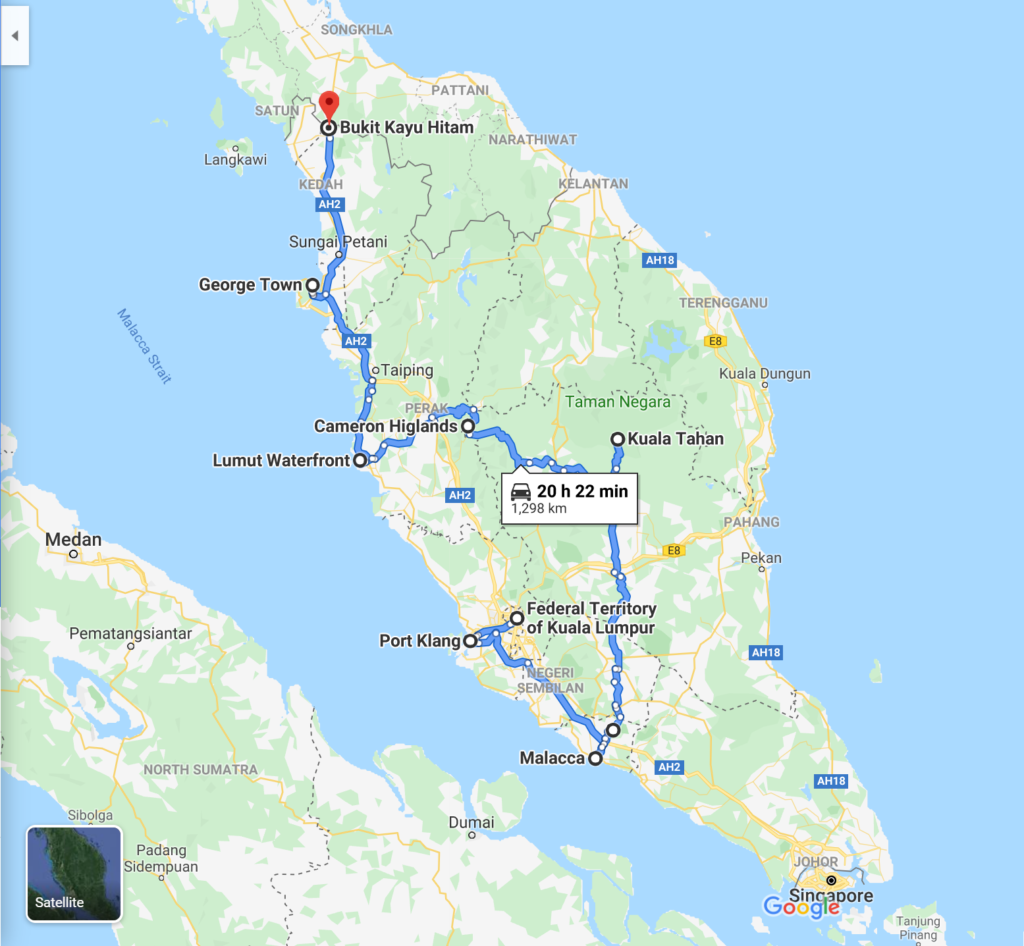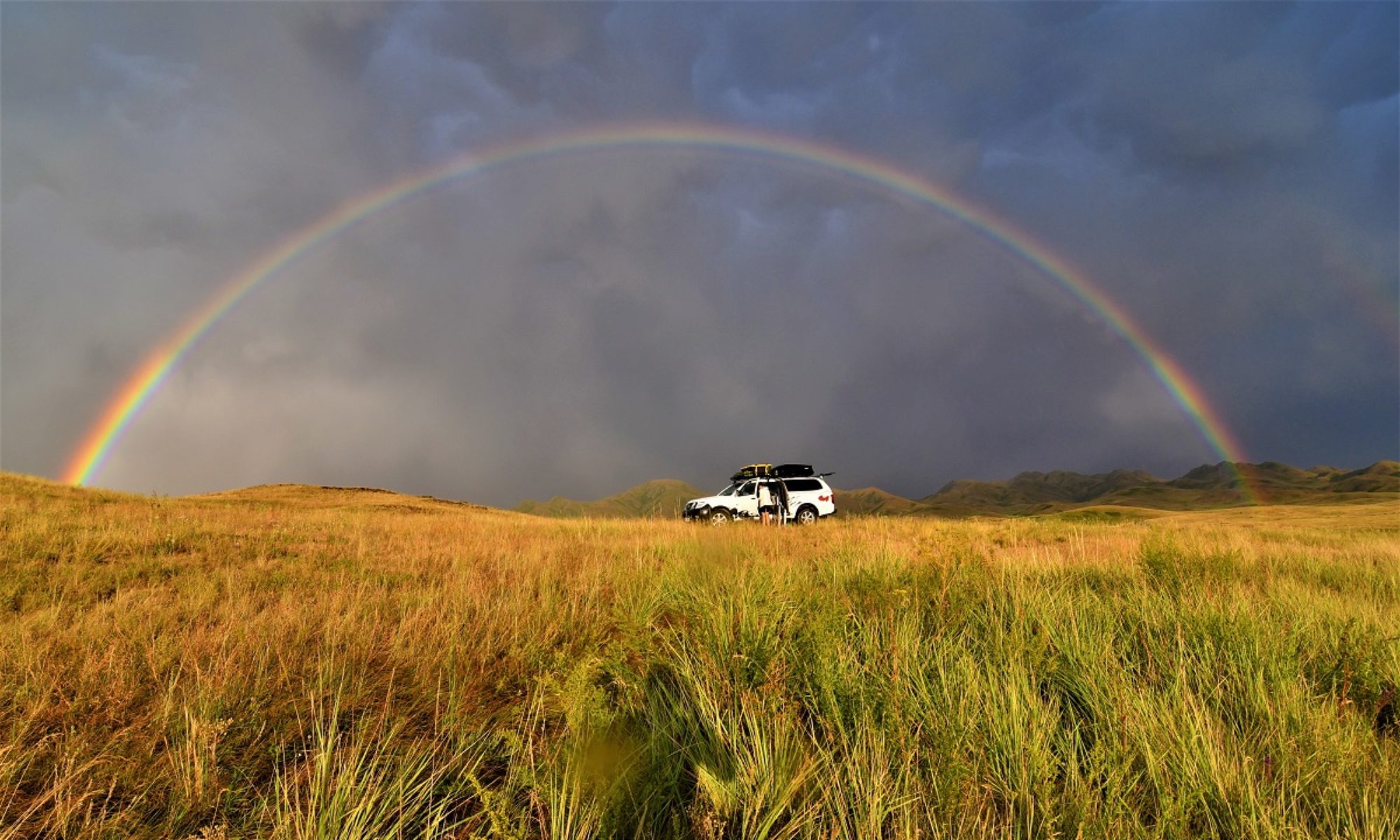
Friday 8th November, 2019 – Wednesday 13th November, 2019 – Kuala Lumpur
Flew in from Bangkok and spent a few days in Kuala Lumpur, waiting for the truck to arrive and go through customs clearance at Port Klang.
Kuala Lumpur is a big city, famous for the Petronas Twin Towers which are still the tallest in the world at 88 storeys ( though not the tallest tower individually) but still very impressive and the city’s landmark. The business quarter looks like any western city with skyscrapers, huge shopping malls where all the high end brands are present. In the older part of the city, you can see traces of its rich colonial past and on top of this you have the added bonus of excellent street food with a mix of malay, chinese and indian as well as european food.
Thursday 14th November, 2019 – Melaka
Arrived yesterday evening after driving from Port Klang where we collected the car. It was a relief to find everything intact.
In the 15th century, Melaka was one of Southeast Asia’s greatest trading ports. The port thrived after the Chinese granted protection to the local inhabitants from attacks by Siam and Jakarta and became a major trade settlement on the trade route between China and India, the Middle East, Africa and Europe. The Portuguese soon arrived and took control of the city in 1511. It was not for long as in 1641 the Dutch took control and ruled Melaka until 1798. Melaka was ceded to the British in the Anglo-Dutch Treaty in 1824 and remained under British rule until 1942.
This colonial past can still be seen today and the historic centre was crowned a Unesco World Heritage Site in 2008. The Porta de Santiago, a small gate house, is the only part of the fortress built by the Portuguese which still remains today. It is among the oldest surviving European architectural remains in Southeast Asia and the Far East.
Stadthuys
This former town hall and governor’s residence dates to the 1650s and is believed to be the oldest Dutch building in the East. It functioned as State Government offices until 1979. Erected after the Dutch captured Melaka in 1641, it’s a reproduction of the former Stadhuis (town hall) of the Frisian town of Hoorn in the Netherlands. Today it’s the main building in a sprawling museum complex and houses some interesting exhibits retracing the local history and explaining local customs.
Dutch Square
The focal point of the Unesco Heritage zone, this attractive and elegant square is surrounded by Dutch-era buildings that have been painted crimson, shady trees and a mass of kitschly decorated trishaws waiting for customers. the fountain erected in 1904 in memory of Queen Victoria is decorated with four bas-relief images of the monarch.
Cheng Hoon Teng Temple
Malaysia’s oldest still-operating Chinese temple, constructed in 1673, remains a central place of worship for the Buddhist and Taoist communities here. The local Chinese community funded its restoration. Traditional methods were used throughout, from the ornate roof ceramics to the painted tigers by the door. Though the temple is dedicated to Kuan Yin, the goddess of mercy, it is also a multifaith temple, with Buddhist, Taoist and Confucian elements and effigies.
We then wandered round the streets of china town.
Friday 15th November, 2019 – Saturday 16th November, 2019 – Taman Negara
On the way to Taman Negara National Park, saw some typical old wooden houses on stilts. According to tradition, the house would have 3 set of stairs: the front stairs for visitors or special guests, side stairs for family and friends and back stairs, leading straight to the kitchen… for women folks!
We also saw lots of oil palm plantations ( mostly own by Sime Darby, the world’s largest producer of Certified Sustainable Palm Oil ). 84 percent of the world’s palm oil is produced in Malaysia and Indonesia.
Palm oil is part of our everyday life and is used by many manufacturers of baked goods, confectionery items, shampoos, cosmetics, cleaning agents, washing detergents, toothpastes and more. Palm oil can also be used as a substitute for crude oil to make biofuels and as a fuel to be burned in power stations to produce electricity. But the picture is not all rosy, Palm plantations have resulted in major deforestation , loss of natural habitat for endangered species and threat to indigenous people and exploitation of the workers. They contribute to the increase in greenhouse gases and carbon emission. Some governments have started to take measure to limit new plantations, manufacturers are replacing or looking for alternative to palm oil but we still have a long way to go…
We drove on to Kuala Tahan which is a small settlement on the Tembeling river from which you can enter Taman Negara National Park. (the access to the park is on the other side of the river).
Taman Negara, which means “national park” in Malay has a total area of 4,343 km2 and it is one of the world’s oldest deciduous rainforests, estimated to be more than 130 million years old. It was created in 1938 and is the largest national park in Malaysia.
One of the attractions is a canopy walk, a 510 meters long suspension bridge between high treetops (said to be the longest in the world). You can walk over it, and enjoy spectacular views at heights of over 45 meter. ( it is in fact a succession of 6 suspension bridges). There is a network of short trails from which you can observe some wild life but you need a guide if you want to go deeper into the jungle.
We did the canopy walk and carried on the trail up to one of the view points called Bukit Teresek. The trail is mainly on a board walk but the last 30 mns are steep stairs and quite challenging under the weather conditions. You get a nice view as a reward though. On the way we spotted a wild pheasant ( bigger than a hen), some monkeys (maquaque I think), skink lezards and a poisonous viper! The latter was pointed out to us , resting on a branch just off the trail . You could hardly see it and can only imagine what would happen if you just brushed against the bush as you walked by…( it can be fatal if you do not get medical attention within 5 to 6 hours).

























































